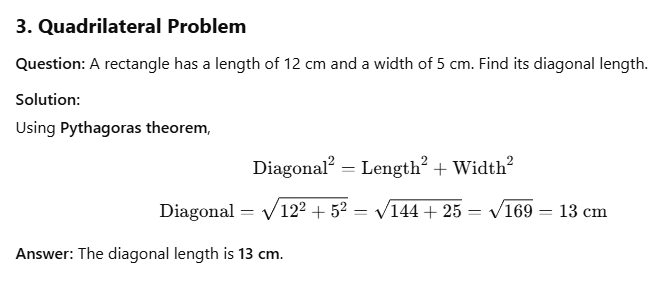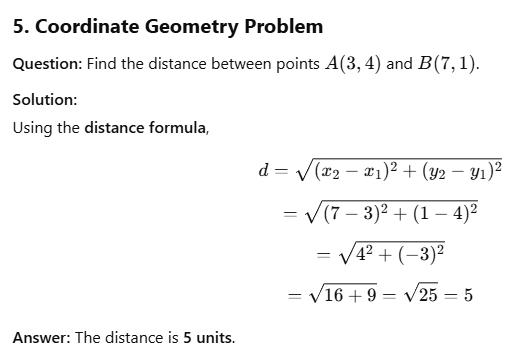The Common Admission Test (CAT) is one of the most competitive and prestigious entrance exams in India. It serves as a gateway to the prestigious Indian Institutes of Management (IIMs) and several other top-tier business schools in the country. Every year, thousands of aspirants prepare rigorously for this exam in pursuit of securing admission into India's premier management institutions.
Understanding the importance, need, syllabus, scoring pattern, ranking system, and selection process of CAT is crucial for aspirants aiming for a career in management. This blog provides an in-depth analysis of all these aspects, helping you develop a strategic approach to crack the CAT exam.
Importance of CAT Exam
1. Gateway to the IIMs
The CAT exam is the primary entrance test for admission into the 21 Indian Institutes of Management (IIMs), which are among the most prestigious management institutions in India. These institutes offer MBA and PGDM programs that are highly regarded worldwide.
2. Admission to Other Top B-Schools
Apart from the IIMs, CAT scores are accepted by over 100 other reputed B-schools such as FMS Delhi, SPJIMR Mumbai, MDI Gurgaon, IMT Ghaziabad, and more.
3. Benchmark for Managerial Aptitude
The exam is designed to test a candidate’s quantitative ability, logical reasoning, verbal skills, and data interpretation, making it an essential benchmark for managerial aptitude.
4. Lucrative Career Prospects
Clearing CAT and securing admission to a top business school significantly enhances career prospects, with graduates receiving attractive placement offers from leading companies in finance, consulting, marketing, and more.
5. Recognition and Prestige
An MBA from an IIM or a top-tier institute commands global recognition, opening doors to leadership roles across industries.
Need for the CAT Exam
1. Standardized Evaluation
CAT provides a standardized way to assess candidates from diverse educational backgrounds, ensuring a fair selection process.
2. Selection of the Best Candidates
With increasing demand for skilled management professionals, CAT helps in shortlisting the best minds who can excel in analytical thinking and decision-making.
3. Maintaining High Academic Standards
The rigorous selection process ensures that only the most capable and dedicated students make it to the prestigious management institutions.
4. Enhancing India's Management Education
By ensuring a high standard of admission, CAT contributes to maintaining India's reputation as a hub for world-class management education.
CAT Exam Syllabus
The CAT exam consists of three main sections:
1. Verbal Ability and Reading Comprehension (VARC)
Reading Comprehension (RC)
Para Jumbles
Para Summary
Sentence Completion
Sentence Elimination
Odd One Out
2. Data Interpretation and Logical Reasoning (DILR)
Data Interpretation (Tables, Graphs, Charts, Caselets)
Logical Reasoning (Seating Arrangement, Puzzles, Blood Relations, Venn Diagrams, Syllogisms)
3. Quantitative Ability (QA)
Arithmetic (Percentages, Ratio & Proportion, Time & Work, Averages, Mixtures & Allegations)
Algebra (Equations, Inequalities, Functions, Logarithms)
Geometry (Lines, Angles, Circles, Triangles, Coordinate Geometry)
Number System
Modern Mathematics (Probability, Permutations & Combinations, Set Theory)
Scoring Pattern
The CAT exam follows a specific scoring pattern:
Total Marks: 198
Number of Questions: 66
Marking Scheme: +3 for a correct answer, -1 for an incorrect answer (for MCQs), no negative marking for non-MCQs (TITA questions (Type In The Answer).
Duration: 120 minutes (40 minutes per section)
Sectional Time Limit: Candidates cannot switch between sections; each section has a fixed time limit.
Ranking System and Percentile Calculation
CAT scores are given in the form of percentiles rather than absolute marks. The percentile score indicates the percentage of candidates who scored below a particular candidate.
Formula for CAT Percentile Calculation:
For example, if a candidate secures the 500th rank among 200,000 candidates, their percentile will be:
Selection Process Based on CAT
Admission to IIMs and other top B-schools involves multiple stages:
1. Shortlisting Based on CAT Score
Each IIM has a different cut-off percentile, usually above 90 for top-tier IIMs and around 80-85 for newer ones.
2. Written Ability Test (WAT)
Shortlisted candidates must write an essay on current affairs or abstract topics to assess their communication and critical thinking skills.
3. Group Discussion (GD) or Personal Interview (PI)
Most IIMs conduct personal interviews, while some also have group discussions.
4. Final Merit List
The final selection is based on multiple factors, including:
CAT Score (30-50%)
WAT/GD/PI Performance (30-40%)
Academic Background (10-20%)
Work Experience (5-10%)
Diversity Factor (Gender & Academic) (2-5%)
Tips to Crack CAT
1. Understand the Exam Pattern
Familiarize yourself with the latest pattern and syllabus.
2. Time Management
Practice sectional time management since CAT follows a strict time limit for each section.
3. Mock Tests and Analysis
Regularly attempt mock tests and analyze performance to identify weak areas.
4. Focus on Conceptual Clarity
Develop strong conceptual clarity in all three sections rather than relying on shortcuts.
5. Work on Speed and Accuracy
Since CAT is a time-bound exam, speed and accuracy play a crucial role.
6. Stay Updated with Current Affairs
Reading newspapers and business magazines can help with the VARC and WAT/PI rounds.
7. Stay Consistent and Motivated
Consistency and perseverance are key to cracking this highly competitive exam.
Conclusion
The CAT exam is an essential stepping stone for those aiming for a successful management career. With its rigorous structure and selection process, it ensures that only the most deserving candidates make it to the top B-schools in India. Strategic preparation, consistent practice, and a clear understanding of the selection process can significantly enhance an aspirant's chances of securing admission to an IIM or another top-tier institution.
If you are an MBA aspirant, start your CAT preparation today and take a step toward your dream of entering the prestigious IIMs!
Sample Questions with Workings and Answers
Verbal Ability and Reading Comprehension (VARC)
Question: Arrange the following sentences in the correct order to form a coherent paragraph: A. However, the implementation of such policies remains a challenge. B. Governments worldwide are increasingly focusing on sustainable development. C. Many nations have introduced stringent environmental laws. D. Achieving economic growth while preserving the environment is a key concern.
Answer: BDCA
Data Interpretation and Logical Reasoning (DILR)
Question: A company’s revenue grew from 200 million to 320 million in 4 years. What is the average annual growth rate?
Solution:
Answer: 12.47% per year
Quantitative Ability (QA)
Question: If a sum of money triples in 6 years under compound interest, what is the annual rate of interest?
Solution: Taking log,
Answer: 20% per annum
Strategies to Crack CAT Exam
1. Understand the Exam Pattern Thoroughly
Analyze previous years’ CAT papers to understand the difficulty level and types of questions asked.
2. Build a Strong Foundation
Ensure a strong grasp of basic concepts in Quantitative Aptitude, Logical Reasoning, and Verbal Ability before moving to advanced questions.
3. Time Management
Since CAT has a sectional time limit, practice managing time effectively by solving mock tests under timed conditions.
4. Regular Practice & Mock Tests
Attempt at least 20-30 full-length mock tests and analyze your performance to identify weak areas.
5. Improve Reading Speed
Reading comprehension forms a major part of VARC. Read newspapers, editorials, and novels to improve reading speed and comprehension skills.
6. Shortcut Techniques & Tricks
Learn shortcut methods for calculations, approximation techniques, and elimination methods to save time in the exam.
7. Stay Consistent & Positive
Consistency is key. Study regularly and maintain a positive mindset throughout the preparation journey.
Some geometry-based questions along with their solutions:
1. Triangle Problem
Question: The sides of a triangle are 7 cm, 24 cm, and 25 cm. Determine whether the triangle is a right-angled triangle.
Solution:
To check if it's a right-angled triangle, apply the Pythagorean theorem:
where c is the longest side.
Since both sides are equal, the given triangle is a right-angled triangle.
Answer: Yes, it is a right-angled triangle.
2. Circle Problem
Question: A circle has a radius of 10 cm. Find the area and circumference of the circle.
Solution:
Using formulas:
- Area = cm²
- Circumference = cm
Answer:
- Area = 314 cm²
- Circumference = 62.8 cm
4. Angle Problem
Question: Two angles in a triangle are 65° and 45°. Find the third angle.
Solution:
Sum of angles in a triangle is 180°,
Answer: The third angle is 70°.





















0 comments:
Post a Comment